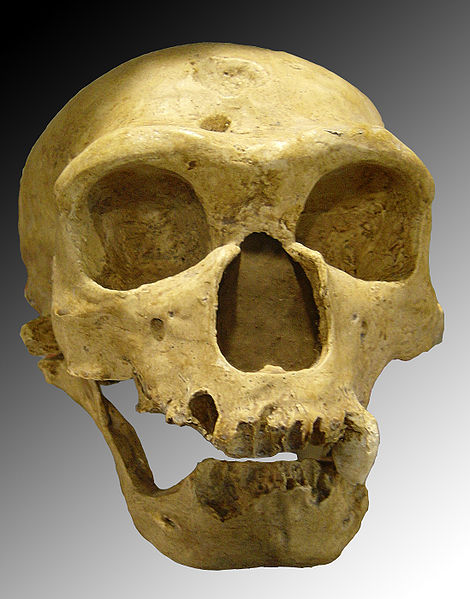We're open daily! View holiday hours
Science News
Never the Twain Shall Meet
May 16, 2011
by Anne Holden

There’s been much to say over the past few years about the possibility of significant interactions – and even interbreeding – between early members of our species, Homo sapiens, and our evolutionary cousins, Neanderthals. But now, new analysis of Neanderthal remains from western Russia casts doubt on the notion that we coexisted at all. Instead, the Neanderthals of western Russia appear to have died out before we even arrived. Results of this study were reported in last week’s online edition of the Proceedings of the National Academy of Sciences.
The research team, led by archaeologist Ron Pinhasi of University College Cork, questioned the analysis of two Neanderthal infants excavated over 10 years ago. The infants were found in the Mezmaiskaya Cave near the Caucasus Mountains of western Russia. Using carbon-14 dating, along with traditional stratigraphic methods (comparing ages of surrounding sediment layers), these infants were originally dated to about 30,000 years ago, just when humans were making their way into the region. This led many to wonder whether the two species ever came into contact, and to what extent.
But Pinahsi and his team were unconvinced the dating techniques were accurate. Central to their skepticism was the fact that the layers of sediment between which the infants were found were themselves dated incorrectly, skewing the original results.
But archaeological dating techniques have improved vastly over the past decade. So Pinhasi and his team put these new techniques to the test, by reanalyzing the Neanderthal infant remains directly. Specifically, Pinhasi harnessed the expertise of Thomas Hingham of Oxford University. Hingham has developed a new method of filtering samples that removes contaminants such as dirt, leaves, and collagen recovered from bone. This can give a far more accurate radiocarbon reading.
According to Hingham, “Previously, research teams provided younger dates which we now know are not robust, possibly because the fossil has become contaminated with modern particles. This latest dating evidences sheds further light on the extinction dates for Neanderthals in this key region.”
When putting the infant bone samples through the filter and dating them again, they found the infants to be 39,000 year old—9,000 years older than previously thought.
These infant remains had been strong evidence that humans and Neanderthals could have interacted with each other in western Russia. Now it is clear they were dead 9,000 years before humans showed up. Could this same story play out in other parts of the Europe and Asia?
“It now seems much clearer that Neanderthals and anatomically modern humans did not co-exist in the Caucasus, and it is possible that this scenario is also true for most regions of Europe,” says Pinhasi. He points to many instances of problematic dates for other archaeological sites excavated over the past several decades.
The western plains of Russia, like the Near East, were a prehistoric crossroads for early humans and our fossil ancestors. The revised analysis of the Mezmaiskaya Cave infants highlights the vast uncertainties we still hold surrounding the early expansions of our species, and our interactions with Neanderthals. But it also opens the door to new discoveries.
Anne Holden, a docent at the California Academy of Sciences, is a PhD trained genetic anthropologist and science writer living in San Francisco.
Image: Luna04/Wikimedia